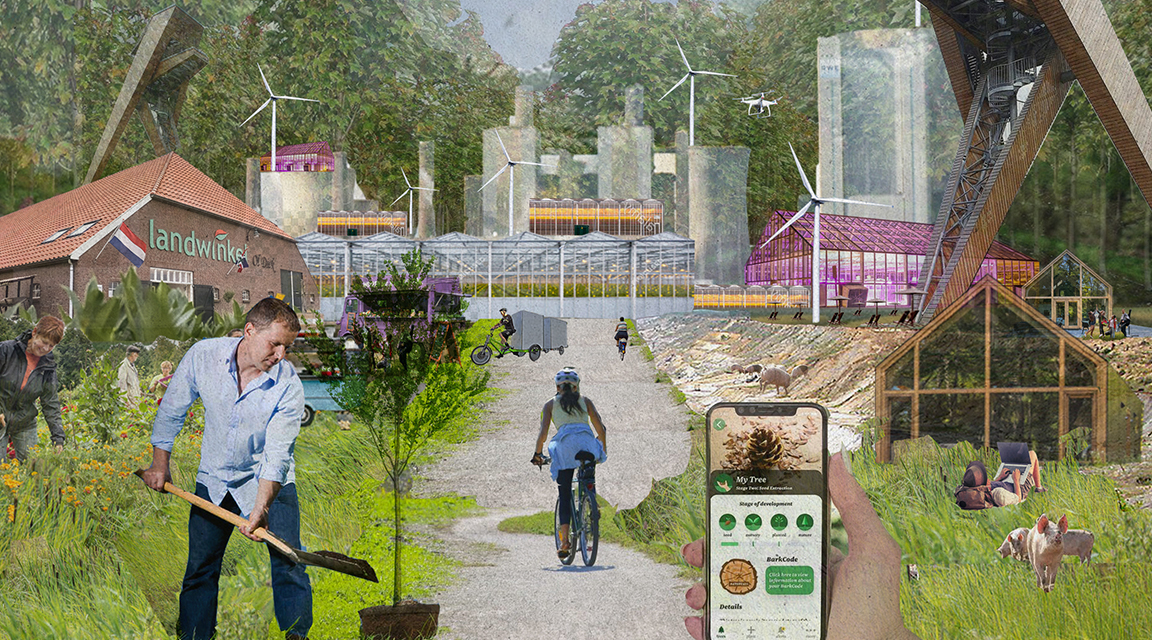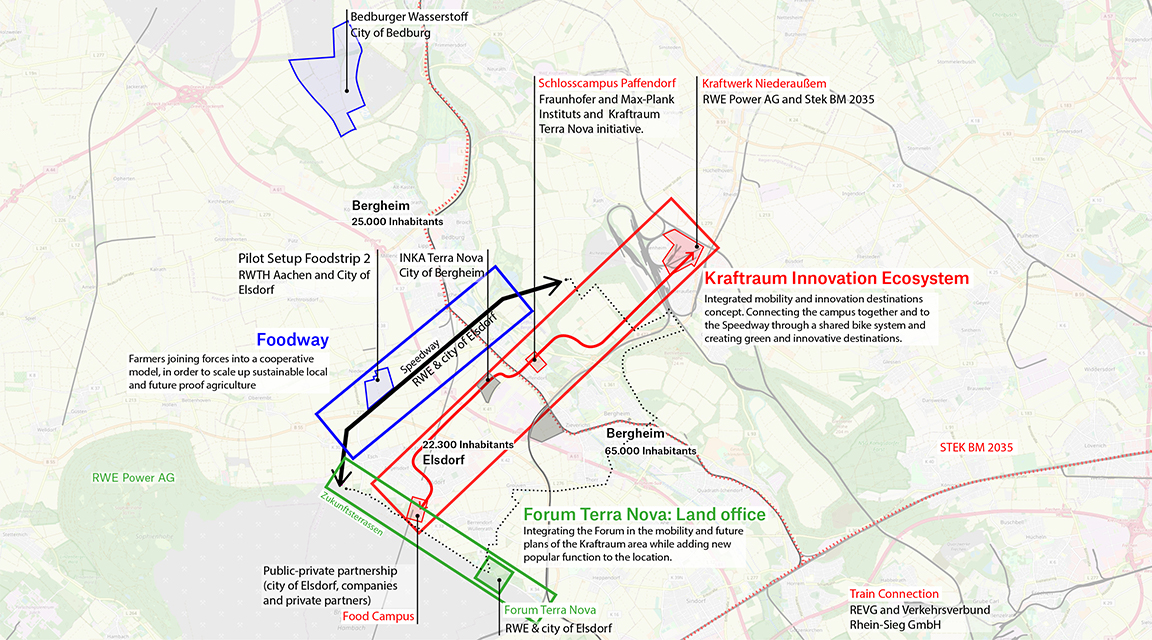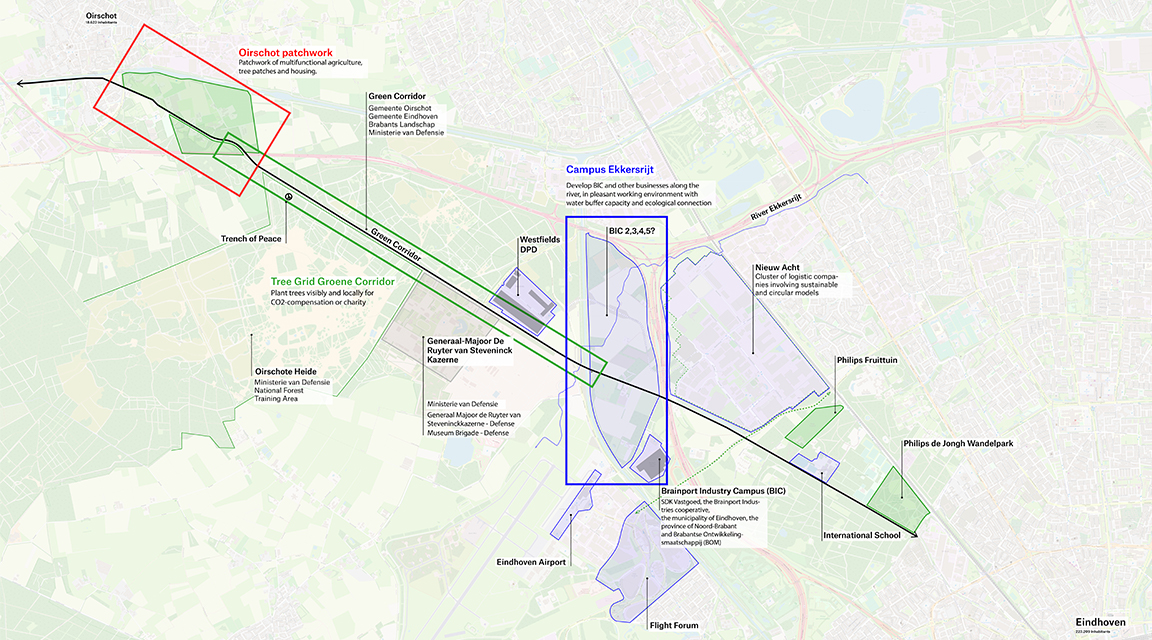Landvestors II
The region
30 september 2021
Landvestors, companies and citizens who develop and invest in landscapes, are an emerging topic in the Netherlands and abroad. In this second publication, we describe our Landvestor experiment in two high-tech regions: Rheinisches Revier (Germany) and Brainport Eindhoven (The Netherlands).
Our goal is to assess whether Landvestors can be a significant part of a regional strategy of landscape development and quality of life.
What can designers, entrepreneurs and governments do to make that work?
From the 12 best practices in 2020 we learned that Landvestors are mushrooming rapidly in several countries, because companies and citizens become more aware of their responsibilities and interests in the landscape, and they notice that governments increasingly struggle to get things done by themselves and increasingly welcome private initiative.

In this publication we shift the focus from the individual Landvestor to what Landvestors as an emerging group can achieve in the development of a region. High-tech regions, be it Silicon Valley or anywhere else, have many common challenges. They generally deal with large landscape-economic transitions, in which they need to adapt spatially to new (cleaner and more automated) production systems and to climate change (clean energy, water storage etc.). Often, the available industrial and other heritage provides inspiration for these transitions. Furthermore, tech regions have a big challenge to attract and retain talent. And in the battle for talent, an attractive living environment is more and more considered a must-have.
Even if a beautiful landscape is not on the top of the skilled worker’s list (actually, it often is), a wrecked landscape without vitality certainly scares them away .Companies have increasingly become interested in their surroundings, since landscape contributes to corporate identity and the attractivity of business clusters. It helps to attract and retain talent, stimulates workers and keeps them mentally and physically healthy (and productive). For many companies, landscape is part of their efforts to become biobased or circular, their corporate social responsibility strategy (CSR), and compensation of CO2 or other impacts. Landscape, in short, is part of the main infrastructure in a business area, no less than roads and fast internet are.
In the two pilot regions, our research-by-design sheds light on the potential of Landvestors as part of regional development strategies regarding landscape and economy. We deliberately don’t make new visions or designs for these regions. Instead, we show how Landvestor-like propositions can accelerate existing visions and landscape ambitions in the area. Our multidisciplinary team has broken up landscape developments into palpable, scalable and financeable elements, to demonstrate the Landvestor business case and governance. During the process, we have met with stakeholders of both regions to discuss their ambitions and their views on the Landvestor propositions.
At the work conference Hightech Highgreen, part of Landscape Triennial 2021, both regions met and shared insights in a Landvestor session. The following parts of the publication show the challenges in the two regions and the fictitious yet realistic Landvestor propositions. These are all scalable, both in spatial elements and financing. The proposals have been eleborated with the real stakeholders of the area in mind, using the feedback of local authorities and experts. The publication ends with a discussion about the Landvestors’ potential, as well as tips & tricks for designers, entrepreneurs and governments.



